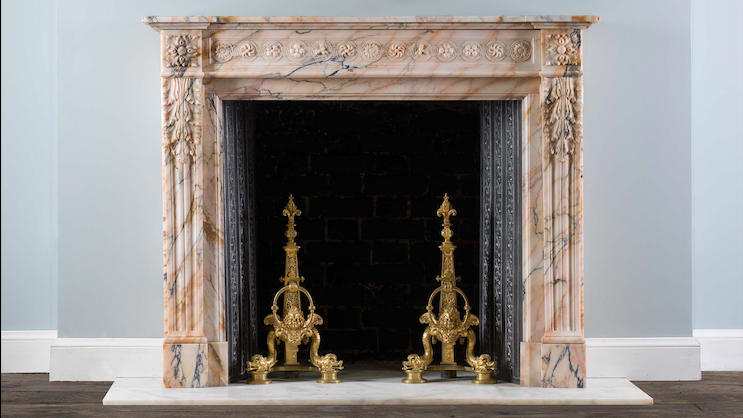When choosing an antique chimneypiece for your home, there are a few important things to consider.
If you live in a period property, you may wish to consider a chimneypiece of the same period style. This is in some instances the most historically sensitive thing to do, ensuring that the chimneypiece suits the property’s other period features. If your house is a listed building, this may in fact be compulsory. Do note that in order to install or replace a chimneypiece or the interior of a fireplace in a period property, you will require listed building consent.
If you wish to install a chimneypiece of the same century, remember that there were often many styles within a hundred year period. For example, the 19th century encompassed the Regency period, the High Victorian and the Gothic Revival to name but three! These radically different styles and fireplaces evolved to embody the features of numerous period styles. Often the proportions of a style are as important as the decorative elements. A large Gothic Revival chimneypiece would look quite out of place in a small Regency house.
There is also a hierarchy within the home. It is perhaps particularly noticeable in the Victorian terrace, where you often had a marble fireplace in one of the prominent public rooms, such as the sitting room, drawing room or dining room. In other more private spaces, the fireplaces were less grand, often cast iron, or wood. In more modest Victorian homes, some of the main fireplaces were slate painted to imitate marble, or even cast iron painted to imitate wood.
It should also be remembered that a chimneypiece is essentially a decorative surround, so do be sure to know what is intended for the interior of the fireplace first. You will need to know what kind of fuel you wish to use – if any – and also check its suitability with a HETAS registered engineer. This will determine what can be used efficiently and safely. You can then choose a variety of options for the interior, such as a fire grate or even a woodburner. Some may favour a purely decorative interior, in which case a pair of elegant andirons standing in a hearth can look lovely. Many clients prefer something a little more rustic, such as decorative logs, pinecones or even books.
Size is important. If you have a chimneybreast, you will need to make sure that the chimneypiece is smaller than the width of the chimneybreast. You will also need to think about depth, making sure that the fireplace doesn’t stick out into the room too much, whilst also ensuring that the shelf has room for your prized possessions, such as an antique clock, or cherished family photographs. Often, the firebox has been reduced in size to accommodate a smaller chimneypiece. If you suspect this might be the case, a good builder will be able to assess it, and if possible, open it up, so you can have a larger chimneypiece installed. Of course, you can also make it smaller, to accommodate something a little more understated.
You may also like to think about the material you are using. Marble is beautiful and comes in numerous colours, so there are plenty of options to suit your interior. Marble fireplaces do tend to be more expensive, so if you are on a budget, a wooden surround can be a good option, as it can be painted any colour, and even painted with a faux marble effect if desired! Stone fireplaces look especially lovely in a rustic or rural interior, as they are less angular than their marble counterparts.
Finally, it is always crucially important to buy architectural antiques from reputable dealers. As these items were once the fabric of a historic building, a reputable dealer will ensure that the necessary permission was sought before they were removed, and check any purchases against the Art Loss Register and other similar databases. It is so often the case that items may have been removed without permission from the relevant authorities, and these cultural losses must be avoided at all costs. Buying from an established dealer also means that there is often interesting provenance; it is always nice to have a centrepiece with a story to tell.
Laura Dadswell, Westland London

